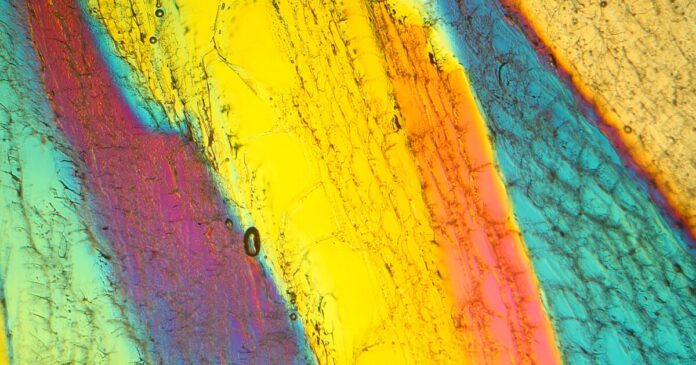We usually think of ice as just frozen water. It is simple, solid, and cold. But water is a master of disguise. With just two atoms, hydrogen and oxygen, it can freeze into more than 20 different types of ice. Each type has its own unique internal structure. Some are smooth and familiar, like the kind in your freezer, while others only appear under intense pressure, like in the deep Earth or on distant moons.
Scientists have been exploring these icy forms for over a century, not just for curiosity, but to understand how water behaves in extreme environments, including places where alien life might exist.
In one study, researchers discovered a new type, designated as ice XIX. It resembles Ice XV, where the oxygen atoms are arranged in the same way, but the hydrogen atoms are arranged differently. Another study reported on the ice phase called ice VIIt, which appears deep in Earth’s mantle or on watery exoplanets. Initially named as VIIt, the phase was then settled into another known phase called ice X.
Scientists from the Korea Research Institute of Standards and Science (KRISS) have now discovered a brand-new form of ice: officially called ice XXI, and it’s unlike anything seen before.
Using a powerful setup that combines diamond anvils and X-ray lasers, they watched how super-compressed water behaves at room temperature. Surprisingly, instead of freezing in a single step, the water underwent multiple freeze–melt cycles, all within the pressure zone where ice VI typically forms. That’s where ice XXI appeared.
What makes it special?
Ice XXI has a unique atomic structure, different from all 20+ known ice types. Additionally, it’s metastable, meaning it can last for a time, even though it’s in unstable form in those conditions, offering a window into how ice forms under pressure. This could help us understand icy planets and deep Earth environments better.
“Rapid compression of water allows it to remain liquid up to higher pressures, where it should have already crystallized to ice VI,” KRISS scientist Geun Woo Lee explains.
The scientists created high-pressure conditions using diamond anvil cells. They loaded ultra-pure water into a hair-thin metal chamber and used a mix of high-speed cameras, laser-based sensors, and real-time monitoring tools to watch the water freeze and melt at room temperature.
By pulsing the pressure up and down, they captured snapshots of the transformation, tracking changes in structure, pressure, and volume with dazzling precision. Even the fluorescence from tiny ruby crystals helped measure the pressure, while Raman spectroscopy revealed how the water molecules were dancing inside.
To spot the exact moment water turns into exotic ice, scientists used powerful X-ray beams at a synchrotron. The scattered X-ray signals were captured by a Lambda detector and analyzed using a program called DIOPTAS. The pressure rhythm was adjusted to an uneven triangle pattern to better match the freezing process.
Two types of detectors captured the action at different speeds: one at a rapid rate of 0.56 million times per second, and the other at a more stable rate of 10 times per second. Together, they helped uncover the hidden dance of water turning into ice.
Scientists ran molecular dynamics simulations using two models: SPCfw45 and TIP4P/Ice46. TIP4P/Ice acts as a stiff water model: its molecular angles and bond lengths stay fixed. It’s well-mapped for high-pressure ice. On the other hand, SPCfw is more flexible, allowing the water molecule to bend and stretch, especially when forming distorted hydrogen bonds, as seen in ice VI.
Even though one model is rigid and the other is bendy, both showed similar trends in how water changes with pressure, and those trends matched what experiments found.
Scientists found when water is super-compressed at room temperature, it doesn’t freeze in a single, clean step. Instead, it undergoes a series of freeze–melt loops before settling into a known form known as ice VI. But tucked inside that pressure zone, they discovered something new: ice XXI. It forms at a pressure of around 1.6 gigapascals and has a body-centered tetragonal crystal structure.
Ice XXI is an oddball; it has more energy than MS-ice VII at room temperature, meaning it’s less stable. But the difference isn’t huge. What’s fascinating is how they transform: only ice XXI can turn into MS-ice VII. Regular water can’t make that leap. However, if you mix water and MS-ice VII, they both transform into ice VI under pressure.
In a high-pressure experiment using powerful X-ray lasers (XFEL), scientists discovered that water doesn’t follow just one path when freezing: it has at least five different routes, even at room temperature.
“With the unique X-ray pulses of the European XFEL, we have uncovered multiple crystallization pathways in H2O, which was rapidly compressed and decompressed over 1,000 times using a dynamic diamond anvil cell,” explains Geun Woo Lee.
Rachel Husband, another member of the research team, adds that the “findings suggest that a greater number of high-temperature metastable ice phases and their associated transition pathways may exist, potentially offering new insights into the composition of icy moons.”
The study is published in Nature Materials.
Source: European XFEL


